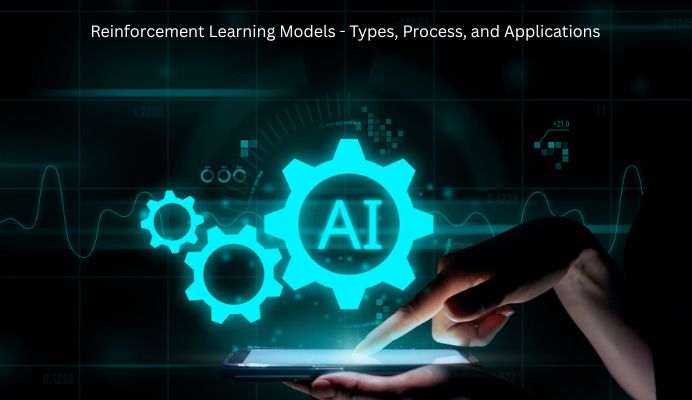
What is Generative AI? – Process and Applications
In recent years, the field of artificial intelligence has witnessed astounding growth, particularly in generative AI technologies. According to a report by McKinsey, 63% of businesses have integrated AI into their operations, with generative AI being one of the most transformative branches. In fact, the generative AI market is projected to reach $6.4 billion by 2030, reflecting its increasing significance across various industries.
So, what exactly is generative AI? At its core, generative AI refers to algorithms that can create new content, whether text, images, audio, or even video, by learning patterns from existing data.
Generative AI is a pivotal technology in AI automation, offering unprecedented capabilities to automate creative and cognitive tasks.
Unlike traditional AI, which typically focuses on analyzing and interpreting data, generative AI takes a step further by using that data to produce original outputs that mimic human creativity.
This technology is powered by advanced models, such as Generative Adversarial Networks (GANs) and transformer architectures, enabling machines to generate content that is not only coherent but also contextually relevant.
How does Generative AI work?
The processes in which Generative AI works are:
1. Training data
The backbone of any generative AI system is its training data. Generative AI models like ChatGPT rely on large data, which often include copyrighted materials. These datasets can contain billions of data points, providing rich information to train the models effectively. The scale of these datasets underscores the significant resource demands of training frontier AI models, which typically require enormous computing power.
Accessing such computing resources can be challenging for smaller start-ups, who often rely on data centers to train their models. In contrast, big tech companies have the financial muscle to invest heavily in the infrastructure to train advanced AI models.
Despite these challenges, the ability to use synthetic data for training has opened new possibilities, especially in scenarios where real-world data is scarce.
The role of training data in generative AI cannot be overstated. It lays the groundwork for the AI’s learning process, enabling it to analyze complex data patterns and generate meaningful outputs.
Whether labeled data for supervised learning or raw data for unsupervised learning, the quality and quantity of training data directly influence the model’s performance and accuracy.
2. Fine-tuning
Fine-tuning is a critical phase in the development of generative AI models. This process involves adjusting the AI model using smaller, task-specific datasets to enhance its performance for applications. By focusing on specific tasks, fine-tuning makes the model more effective and relevant, ensuring that it can deliver high-quality outputs tailored to the user’s needs.
The quality of AI models’ output is heavily influenced by both the initial training data and the fine-tuning process. Fine-tuning allows for refining the model’s capabilities, making it more adept at handling specialized tasks.
This improves the accuracy of the content generated and enhances customer satisfaction by providing more precise results.
3. Content generation
The content generation phase is where the magic of generative AI truly comes to life. During this phase, trained models produce new data that reflects the characteristics, creating outputs ranging from text and images to code. The versatility of generative AI is evident in its ability to generate diverse types of content, making it a valuable tool for various applications.
Generative AI models excel in natural language processing, enabling them to produce coherent and contextually relevant text. This is particularly useful in applications like chatbots, language translation, and content creation.
By leveraging advanced machine learning techniques, these models can generate human-like text that enhances user interactions and improves the overall user experience.
Applications of Generative AI
Some of the applications of generative AI include the following
1. Text generation
Generative AI utilizes large language models (LLMs) to generate text that closely mimics human writing, making it invaluable for applications like chatbots. In this process, pre-trained models such as GPT (Generative Pre-trained Transformer) are crucial.
These large language models are trained on extensive datasets to learn patterns in human language, enabling them to generate coherent text based on learned patterns.
2. Image and Video Creation
Generative AI excels in creating synthetic media, including realistic images and videos, which are widely used in advertising, entertainment, and content creation.
The ability to create realistic images and videos extends beyond mere aesthetics. In advertising, generative AI can produce tailored visual content that resonates with target audiences, driving higher engagement and conversion rates.
3. Code generation
Generative AI could transform software development by automating code creation. This technology can write new code, suggest optimizations, and identify bugs. By automating routine coding tasks, generative AI allows developers to focus on more complex tasks.
Generative AI tools assist developers by automatically generating code snippets and improving debugging efficiency. These tools can suggest code improvements and identify potential issues, streamlining the development process and reducing the time required to bring new applications to market.
Benefits of Generative AI
Some of the benefits of generative AI include the following
1. Improved creativity
Generative AI tools enhance creativity by generating multiple content versions, allowing creators to explore various ideas and concepts. By leveraging advanced algorithms, generative AI can create original content that pushes the boundaries of human imagination. This is valuable in digital art, music composition, and content creation, where innovation is key.
The ability of generative AI to generate innovative content fosters a collaborative environment where human creativity and machine-generated ideas intersect.
This collaboration leads to unexpected outcomes, transforming traditional creative workflows. By integrating generative AI into their processes, creators can achieve higher levels of innovation.
2. Better decision making
Generative AI improves decision-making by analyzing large datasets, identifying patterns, and generating insights. This allows organizations to make informed decisions quickly and efficiently, supporting better strategic planning and execution. The ability to simulate various scenarios and generate hypotheses further aids managers in making well-informed choices.
Another benefit of generative AI is its ability to enhance forecasting accuracy. By providing insights based on extensive data analysis, generative AI helps organizations anticipate future trends and plan accordingly.
3. Real-time personalization
Generative AI utilizes advanced algorithms to analyze user data and preferences, enabling the creation of personalized content that resonates with individual users. Generative AI boosts user engagement and satisfaction by dynamically tailoring responses and content based on user behavior.
This real-time personalization process ensures that users receive content that is relevant to their interests and needs, leading to higher conversion rates and improved customer experiences.
Challenges and Risks of Generative AI
Some of the challenges and risks in generative AI include
1. Inaccurate Inputs
Generative AI models are not immune to producing inaccurate or nonsensical outputs, known as AI hallucinations. These errors can be minimized by implementing guardrails that restrict models to trusted data sources, ensuring the generated content is accurate and reliable.
Inaccurate outputs can undermine the credibility and reliability of generative AI systems. Therefore, developers must prioritize the implementation of rigorous testing to ensure that the models produce accurate and meaningful results.
By addressing this challenge, organizations can enhance the trustworthiness and effectiveness of generative AI applications.
2. Bias in AI Models
Bias in AI models is a significant concern, as generative AI may perpetuate existing societal biases present in the training data. This can affect the fairness and inclusivity of the generated outputs, leading to unintended consequences.
To address this issue, it is crucial to ensure that training data is diverse to implement techniques that mitigate bias during the model development process.
Regular audits can help identify and address biases, promoting fairness and inclusivity in AI-generated content. By prioritizing ethical AI practices, organizations can build more equitable AI models, reflecting various perspectives and values.
3. Security and Privacy Concerns
Integrating generative AI into various sectors raises significant security and privacy concerns. Generative AI systems may pose data breach risks, where sensitive information can be unintentionally exposed during data generation processes. Privacy vulnerabilities can lead to unauthorized access to personal data embedded in training datasets, posing risks to user privacy.
Comprehensive data protection measures that safeguard user information against potential threats are essential to address these concerns. Ensuring robust regulatory frameworks can help mitigate security and privacy risks, promoting the responsible use of generative AI technologies.
Connecting with an AI automation company can help harness the power of generative AI. These firms specialize in integrating generative AI models into existing workflows, enabling businesses to automate complex processes and enhance productivity.
For instance, an AI automation company may deploy generative AI tools to automate content creation for marketing campaigns, generate synthetic data for training other AI systems, or even automate software development through code generation.
By doing so, these companies empower businesses to focus on strategic initiatives while AI handles routine and repetitive tasks.






